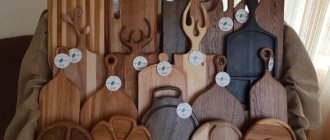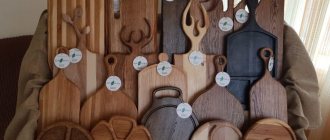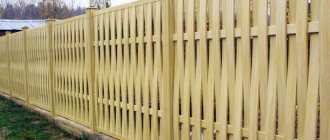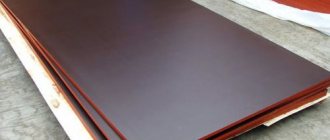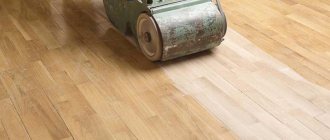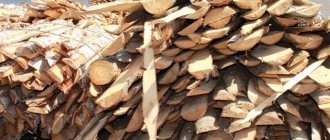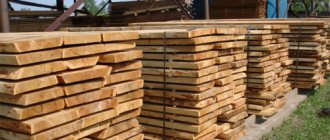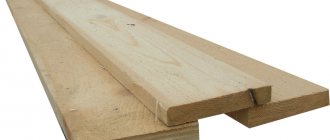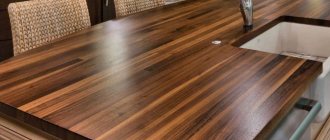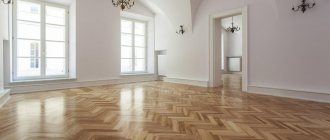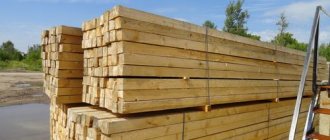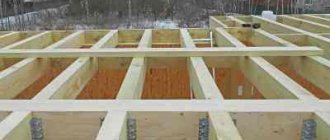A cutting board is a must-have accessory in every kitchen. It is used every day, so it must be comfortable, practical, durable and have a pleasant appearance. This article will tell you about the features of choosing a cutting board and will help you figure out what you should immediately pay attention to when purchasing.
Basic criteria for choosing a cutting board
To choose the right cutting board that will facilitate the process of cooking, you need to choose it according to several criteria:
- Size,
- Weight,
- Strength and durability
- Stability on the working surface,
- Safety of knife material,
- Environmental friendliness and safety of the material for health,
- Design.
Of course, it’s worth starting with the fact that using the same board for slicing meat and fish, cheeses and baked goods, vegetables and fruits is unhygienic, even if it has an antibacterial coating. In addition, boards tend to absorb food odors to a greater or lesser extent, sometimes creating very unusual cocktails of aromas. Therefore, the kitchen should not have one board for all occasions, but a set for different types of products.
The optimal set of cutting boards for the home includes 4 boards: for meat, for fish, for vegetables and fruits, for bread. Professional kitchens use up to 12 cutting boards of different sizes and materials.
Uniform and accessories
The shape of the cutting board is not of fundamental importance. The choice of this parameter depends only on the personal taste and preferences of family members participating in the preparation of dishes. The modern market offers a wide range of products that differ in this parameter:
- round, oval, rectangular, square and trapezoidal boards are familiar to the buyer’s eye;
- boards in the shape of fish, different types of fruits and vegetables are used to enliven the interior of the room, and are also convenient in order to avoid confusion in choosing.
The presence of additional accessories greatly simplifies the use of the cutting board. These include: handles, grooves for collecting liquids, containers and tray inserts for chopped products, rings for hanging.
What size cutting board to choose
The size of the board plays a decisive role in the ease of use. Its working surface must accommodate the entire product. You will probably feel uncomfortable cutting up a chicken carcass that constantly falls off the board or cleaning a fish whose tail hangs over the edge and stains your clothes.
We recommend having boards of different sizes in the kitchen, and choosing the shape based on personal preferences (square, round, rectangular). The standard size of a board for slicing fish and meat is 40x30 cm; for chopping meat and fish, you can take a larger one - 50x35 cm. A board of 35x25 cm is suitable for slicing and chopping vegetables, and for performing small tasks, for example, slicing greens or lemon, a board measuring 20x15 cm will be enough. Thin boards are suitable for light and soft products, and for steaks or chops it is preferable to choose boards 3–8 cm thick.
Does size matter?
Why is board size important? It affects the quality, convenience and cutting time. When something falls off the cutting board, you need to take the time to pick it up. Plus, it should completely fit the largest object being cut or carved, such as a turkey. From this point of view, boards that fold out into smaller elements are convenient.
Let's look at what cutting boards are made of these days.
Wooden cutting boards
WMFWooden cutting board, 40 x 32 cm, dark wood
Wooden boards look great in the kitchen - they are a classic, relevant at all times. In order not to be disappointed in the quality, you need to pay attention to the type and species of wood from which the board is made.
Cutting boards made from soft woods such as linden, pine or birch are not durable. Affordability and light weight are their main advantages. Soft wood leaves deep cuts from a knife, quickly absorbs the color and smell of food, and swells and deforms when exposed to moisture.
Hardwoods include oak, beech, acacia, cherry, cypress, teak, and rubber wood. Cutting boards made from them are much more practical and durable.
Beech cutting boards are convenient, not very heavy and have an affordable price. But this material attracts moisture, so it is only suitable for cutting dry products.
A rubber wood cutting board is perfect for cutting vegetables and fruits. It quickly absorbs moisture and odors, is hard enough not to leave cuts, but does not damage the cutting edge or dull the blades of knives. In addition, the material remains presentable for a long time: traces of use appear very slowly.
Strong acacia boards are designed to become faithful helpers in the kitchen. Their durability and quality are appreciated even by professional chefs. However, this is a fairly expensive type of wood. Oak cutting boards are not afraid of impacts, do not delaminate, and their dense structure does not absorb moisture and odors. Knives on oak boards do not leave deep cuts, and the smooth surface is suitable even for slicing meat and fish. Excellent oak boards are available in the Woodinhome and Scanpan brands.
Cypress is another type of hardwood used in cutting boards. Very durable and antibacterial, they do not dull knives and are practically waterproof. Cypress cutting boards from the Japanese company Miyabi meet the highest quality standards: they do not absorb odors, do not damage knives and look very aesthetically pleasing.
Teak wood combines density and grain, as well as resistance to moisture. In addition, tropical wood boards are protected from germs and fungus. The surface of such a board does not deform, does not dull knife blades, and the material itself is environmentally friendly and harmless.
Cherry wood has medium density and is practically not prone to rotting. Cherry boards are gentle on knives and are suitable for cutting any food, and their beautiful deep color makes them an ideal option for serving ready-made dishes and snacks to the table. A wonderful example is the boards of the Zwilling JA Henckels brand. The bestsellers of this German brand will last for many years. The company also produces other environmentally friendly cutting boards made from bamboo.
Bamboo is one of the most popular cutting board materials and is a great budget-friendly alternative to wood. Lightweight, but at the same time quite strong, bamboo boards do not scratch and are quite easy to maintain. Bamboo boards dry much faster than wooden boards, since bamboo repels moisture.
Features and purpose
Modern concepts of quality of life determine a number of specific requirements for the use of cutting boards. Such an element of kitchen utensils should be convenient to use, easy to clean, and comply with sanitary and hygienic as well as aesthetic standards. An important factor is a long service life without loss of the basic properties of the product. When choosing a board, first of all you should pay attention to the size and material from which it is made.
How long the knife will last without losing its sharpness depends on the quality of the materials used.
Today, the wide variety of this device can surprise absolutely any user. If previously a wooden cutting board was considered the best, today a variety of raw materials are used to make it. In addition, very often on the shelves you can find original samples with unusual decor, shape, and additional accessories. Of course, using cutting boards for chopping food is their main purpose. The products not only make cooking easier and save time, but also serve as reliable protection for your kitchen set against damage from sharp knife blades.
Deciding on how many cutting boards a housewife should have in her kitchen is necessary based on considerations of hygiene, safety, and expediency. It is recommended to use at least 4 types of products in everyday life:
- for herbs, vegetables, fruits;
- for raw fish products;
- for poultry, beef, pork;
- for bakery, cheese and sausage products.
To avoid confusion about which board is intended for what, you can purchase cutting surfaces in different colors or sizes. Ideally, it is better to find sets of boards, each of which has a special marking with images of vegetables, fish or other relevant products. They can also vary in shape and look like some kind of edible food.
End cutting boards
Zwilling JA HenckelsCutting board large, 42 cm, bamboo, natural
End boards are often classified as professional chef equipment. The boards are made from the end part of the wood, that is, the fibers are located not along, but perpendicular to the cutting surface. This production technology increases hardness and wear resistance many times over - even a very sharp knife practically does not damage the wood fibers.
Most often, end boards are 5–10 cm thick, which makes them suitable for chopping large pieces of meat, which is why they are often called “butcher’s board”. End boards have many advantages: knives do not require frequent sharpening, the surface of the board does not allow bacteria to penetrate inside, it is durable, hygienic and moisture-resistant. End boards are multifunctional: they are suitable for cutting any food and for beautifully serving ready-made food. What distinguishes this cutting board from others is its original appearance: the end parts of the wood not only make the board harder, but also create a unique mosaic pattern on it. In the interior of the kitchen, the end board looks beautiful and expensive.
Progress
Cut the cutting board according to the template using a jigsaw. Sand the product thoroughly. Most of the work will be on finishing the ends.
Straight surfaces are processed with a grinding machine, and hard-to-reach curves with a rasp or sandpaper. A milling machine is used to give the sides of the board a noble appearance. At the final stage, final sanding is carried out with sandpaper of different grits.
The finished plywood board is painted on one side or pictures are burned out. The decorative surface is varnished. The working surface and sides are treated several times with hot wax or mineral oils.
Properly selected wooden cutting boards will last a long time and decorate the interior of the kitchen.
Pressed wood cutting boards
EpicureanWooden cutting board, 37x29 cm, natural
The compressed wood used in Epicurean brand cutting boards is designed to take care of your knives. Compressed wood fiber keeps knives sharp, but at the same time it is hard enough and does not leave deep scratches. Due to thermal pressing, the boards acquire special strength and can withstand high temperatures, so you can place hot dishes on them. The material does not absorb odors and is suitable for cutting any food: meat, fish, vegetables and bread. One of the most important advantages of compressed wood cutting boards is their increased moisture resistance, which makes them dishwasher safe.
Plastic boards
Joseph Joseph Set of 4 cutting boards in Folio Large stand, 34 cm
Plastic boards, unlike wooden ones, are unlimited in design. They come in a variety of shapes and colors, and are also affordable. The advantages also include durability, light weight and easy cleaning, including in dishwashers. Joseph Joseph brand plastic boards meet the highest quality criteria: they do not slip on the work surface, are scratch resistant, do not absorb odors, do not damage knives and, what is very important, are absolutely safe for health.
The impact of plastic on human health is impossible to fully monitor, because the chemicals released by it are all around us. Along with the products that people cut on cutting boards, microparticles of plastic inevitably end up in their food, which can negatively affect health if the material is not of high quality. To protect yourself, choose products from well-known brands, the quality of which is confirmed by valid quality certificates.
Functional boards with additional features
Progress has affected even this simple accessory. Today you can buy a cutting board with enhanced functionality and an antibacterial coating, for example, containing silver particles.
Bread board with bread bin
In our review of bread bins, we already touched on boards with lids designed for storing and slicing bread. This option is convenient because you will never confuse a board for foods that require heat treatment with a bread board.
The same line has special offers for pies and pizza. They are convenient for serving and storing.
Devices for cutting baguette
How much such accessories are needed in the kitchen is up to you to decide. In any case, they look original and help cut a long loaf into neat slices of equal thickness. It is especially convenient to cut fresh bread with a crispy crust. For work it is better to use a knife-saw.
Cheese cutting board
There are several types of special boards for cutting cheese:
- With a set of knives for different types of cheese. In compact models, knives are stored in compartments on the reverse side. There are more massive options that have stands or drawers for knives.
- Cutting cheese boards with a fishing line or a built-in knife , designed for cutting hard cheeses into thin slices.
- Small boards with glass lids similar to bread bins. They maintain an ideal microclimate for storage.
Special cheese boards are always made only from natural wood or mold-resistant bamboo. They need to be washed and disinfected periodically.
Multi-tasking sink attachment
There are different board options for washing. The most compact ones in this line are semicircular and are installed on the sink. Another option is slicing surfaces with a colander.
Bulky models should be chosen only if you have a spacious kitchen and need to process a large amount of vegetables. The colander is located directly above the sink, so you can safely open the water to wash vegetables for chopping and rinse the knife. This model is also convenient for peeling vegetables.
There are wooden, plastic and glass products on sale. Considering the proximity of water, it is better to give preference to lightweight and practical plastic.
Board with food container
This is already a whole box, in the top lid of which there is a cutting surface and a hole. During the slicing process, food is swept into a hole, from where it ends up in a drawer. Convenient for salads, stews and other dishes that require a large variety of ingredients.
The line has different design options. Most often, developers play with the shape, number of drawers, and how to access them.
This row also includes bread boards with compartments for crumbs. It’s very convenient, since you don’t have to collect the crumbs on the table, but you can pour them out to the birds.
Combination with scales for maximum accuracy
By combining two important devices, kitchen accessories designers have created a smart device. This model is needed by housewives who like to cook exactly according to recipes. It is not difficult to weigh the chopped products and immediately add the missing piece.
Stone and glass cutting boards
Wood4wine Set of marble cheese board in a handmade wooden frame and 3 knives
Cutting boards made of stone and glass are not only very beautiful and decorate the kitchen, but are also resistant to moisture and high temperatures. However, one significant drawback forces them to be used exclusively for serving - the hard material damages the cutting edge of the knives and dulls the blades very quickly.
One of the leading design trends is the use of marble in the interior. Serving appetizers or cheeses on a Walmer brand marble board will transform your holiday table and attract the attention of guests.
Epicurean brand pressed wood serving boards come in a wide variety of shapes and materials. An interesting option for serving cheese or canapés is a decorative hexagonal board in graphite color. The brand's assortment includes stylish serving boards for serving steaks and sausages with recesses for sauce. The boards are dishwasher safe, which is a major advantage over wood and end serving boards.
Connoisseurs of eco-style design solutions will love teak cutting and serving boards created by the American company Teakhaus. Fancy patterns on the smooth surface of tropical teak wood boards will decorate any kitchen and diversify the serving of snacks, breads, and cheeses.
For the perfect cheese and wine dinner, turn to legendary Dutch brand Boska, which specializes in wooden and natural slate cheese boards. A striking slate serving board will help create a festive atmosphere!
Selection of material for manufacturing
We sweep away plastic, ceramics and glass immediately. And not only because these materials are difficult to process manually. But also because of their high hardness and negative impact on the knife blade, which quickly becomes dull when in contact with such surfaces.
Cutting board materials
Let's focus on wood, as a natural, beautiful and pliable material, most suitable for our purpose.
Special cutting boards for meat and bread
A butcher's block is a wooden board with a retractable tray designed primarily for chopping, cutting and slicing meat and poultry. The wooden block, 8–10 cm thick, is usually made of end grain or very hard wood, and the pallet is made of stainless steel or durable plastic. This combination of materials makes the butcher block reliable, strong and durable. High-quality butcher's blocks with steel tray inserts are presented in the Continenta brand's assortment; they are not only functional, but also have an original design. An oak cutting board with a plastic tray from the German brand WMF is also of high quality and will last for many years.
A special board for slicing bread with deep grooves is designed to solve the problem of bread crumbs falling on the table. Large and small crumbs collect in the recesses of the board and are easily shaken off into the trash container. Bread boards are made from natural hardwood or end grain wood - an environmentally friendly and beautiful material. Working with baked goods on such a surface will definitely be a pleasure for you! In addition, bread boards have an unusual design and will become an original addition to the kitchen interior. Such boards should be stored vertically; washing in dishwashers is not allowed.
The Continenta brand produces high-quality bread boards made of acacia: the durable material will be gentle on your knives and is perfect for serving sliced bread to the table.
The bread board from the WMF brand is made of bamboo and stainless steel, it has a special compartment for storing a knife, which is very convenient.
Design development
First, draw a sketch on paper and make a detailed drawing with dimensions. You can make a sketch yourself, use ideas from the Internet, or trace your favorite board model.
It is necessary to consider how the product will be attached to the kit. Then make a template from cardboard and transfer it to plywood and outline the kennel.
What material should I choose a board from?
We recommend having several wooden or pressed wood boards in the kitchen for cutting bread, vegetables, fruits, cheeses, sausages and various delicacies, as well as several plastic boards for cutting meat, poultry and fish. For cutting and chopping meat, purchase a thick end board or butcher's block. To make your wooden board last longer, place a thin plastic board on top.
To present steaks and cheese beautifully, choose a few sturdy serving boards made from oak or beech, which have a pleasant aroma, or durable and unpretentious pressure-treated wood.
Bosca slate boards are perfect for slicing and serving cheese: they do not absorb odor and do not oxidize when in contact with cheese and other acidic foods.
Tips for care and storage
Proper care of your cutting board not only increases its service life, but also plays an important role in food hygiene. Tips for housewives:
- Glass and plastic surfaces can simply be washed under running water with the addition of detergent.
- Lemon will help restore shine and cleanliness to the glass. It is enough to wipe the product on both sides with a slice of citrus and rinse in running water.
- To start using a wooden cutting board, you need preliminary preparation. Both sides should be sanded, then wiped dry with a towel and lubricated with a small amount of vegetable oil. When the wood is dry, the board can be used. Such manipulations allow you to extend the service life of the product.
- Plastic boards can accumulate odors. A solution of water and soda will help restore them to their original appearance. It should be applied to the entire product, allowed to sit for a few minutes, and then rinsed thoroughly.
Soda absorbs all unpleasant odors, so it is recommended to clean plastic boards with it.
Lemon juice with salt removes dirt and unpleasant odors
The glass board should be washed under running water with any dishwashing detergent
